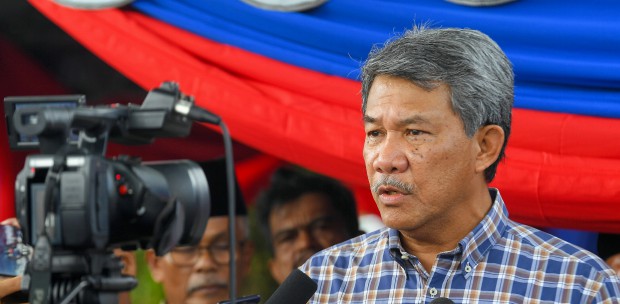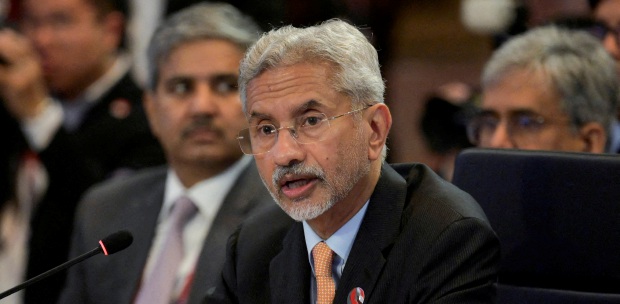I have contended previously that Asean, with its diversity among its member states, is a solid alliance in navigating and guiding the path forward post-Covid-19 to achieve peaceful coexistence in the Indo-Pacific. This is a follow-up.
I will speak about powerful forces, namely population, economic size, trade, foreign direct investments (FDIs), and cross-border mobility, that accelerate globalisation at present — ensuring every country is better off through cooperation instead of coercion.
The Indo-Pacific region is made up of diverse countries in terms of population size, economic power, and social and cultural fabrics. Most will continue to grow in population. However, their difference with China and India will continue to be huge.
Furthermore, both countries are late industrialisers, and have the advantage of short-circuiting the process of technological advancement. Technical progress in these two largely populated countries surely is a vital booster for persistent growth.
Economic differences between and within lower-, middle-, and high-income groups of countries in the Indo-Pacific region are also astounding.
The United States and China are the two largest economy. India has a huge difference of national output with the US and China. But, the opportunity to narrow the gap is large.
The combined trade of China, the US and Japan is about 28 per cent of the world's combined total in 2020. Although the US, Japan, and other allies performed reasonably well in this front, they are less impressive when compared with China.
Nonetheless, the persistent huge trade imbalance between the US and China is the key discontentment between these two countries.
Cross-border flows of FDIs have grown by leaps and bounds. The US was the largest FDI recipient, followed by China. Both will continue to attract more FDI inflows due to their economic size.
But the concern is, will the US hinder China in attracting more investments from abroad in the future?
I am cautious of the likelihood that the US and her allies will create barriers for China to attract FDI inflows, especially in making higher value-added goods and services.
This will certainly raise the stake of hostility. Therefore, what approach can be in place to have a win-win solution?
In terms of people mobility, the US has the largest number of inbound tourists in 2019 (79.3 million), followed by China (65.7 million), whereas Thailand, Japan, and Malaysia received 39.8 million, 32.2 million, 26.2 million international visitors, respectively.
Although more analysis of the new normal post-Covid-19 — namely, safer and healthier travelling — is required, the dynamics of relations in international travel will likely not diminish with the use of vaccine passports.
Sadly, the Indo-Pacific has become a region where US-led allies are antagonistic to China. The confrontation is unnecessary because the aforementioned factors will make every country benefit more through friendlier relations.
In retrospect, the West has had a long history of contesting in the East. Edward Said eloquently pointed out: "[Orientalism] puts the Westerner in a whole series of possible relationships with the Orient without ever losing him the relative upper hand". Regrettably, the prejudice still persists today.
Britain notably has inclined to show the Union Flag in South China Sea. Lynn Kuok testified that, in the UK Parliament, Britain must commit to 4Ps, namely "a presence that is persistent, principled and purposeful".
She even insists that Asean member states are unable to bridge the geopolitical gap on the basis of "rule-based" intermediation between China and the West or the US-led allies.
In contrast, Niall Ferguson expresses, in The Economist, that the US has four deficits — a manpower deficit, a fiscal deficit, an attention deficit, and a history deficit — that undermine its ability to preserve international peace and stability.
It serves as the basis for asking: how can a group of countries — regardless of the dictation of political, economic, and social cultural — work together to build a long-lasting realisation-focused view of justice in the Indo-Pacific and beyond?
Amartya Sen expounds: "An exercise of practical reason that involves an actual choice demands a framework for comparison of justice for choosing among the feasible alternative and not an identification of a possibly unavailable perfect solution that could not be transcended."
The task is lengthy, but worthwhile for the pursuant of peace, stability, and coexistence of a pluralistic group of countries in the Indo-Pacific region.
In this context, the centrality of the Asean is pivotal. Malaysia must play a crucial role by working together with other member states to start a continuous process of regular conversations with every country — including China — in the Indo-Pacific region.
This must aim for trust-building to establish mutually agreeable institutional arrangements that are inclusive and beneficial, which in turn will bring improved wellbeing, and peaceful coexistence for all in the Indo-Pacific.
Ali Alatas correctly said: "We could begin to design, establish and maintain the habits and processes of cooperating and of interacting for peace and stability as well as for common progress and prosperity so that the world, or at least the neighbourhood in which we are, may become a better place to live in."
The writer is a professor at Reitaku University, Tokyo, and has been teaching Southeast Asian studies, international economics, integration, development economics and Asian economy since 1983
The views expressed in this article are the author's own and do not necessarily reflect those of the New Straits Times






